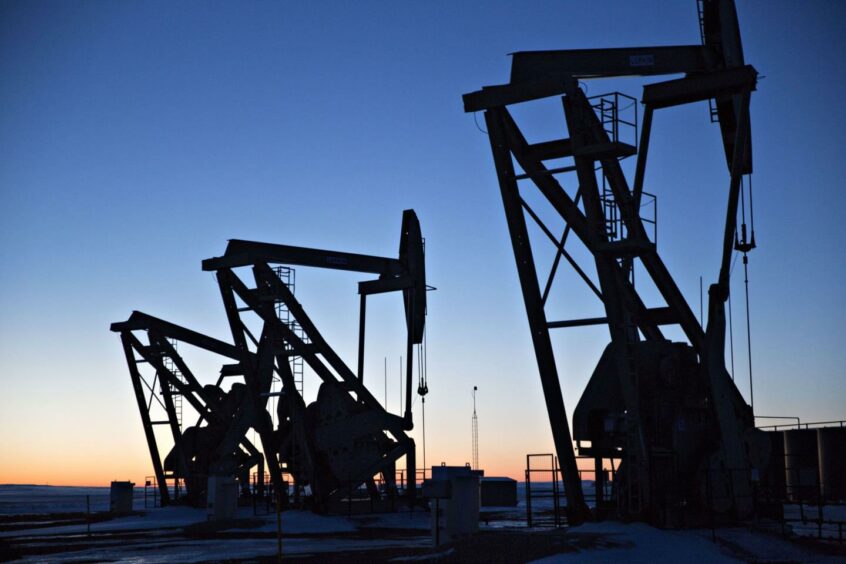
Oil surged at the start of the week as the possibility of war in Ukraine fanned demand, with the US benchmark nearing $95 a barrel.
West Texas Intermediate rallied more than 1% to hit the highest since 2014, building on a run of eight weekly gains. A flurry of diplomacy over the weekend — including a telephone call between presidents Joe Biden and Vladimir Putin — failed to calm tensions after the US warned an invasion of Ukraine may be imminent. Moscow denies that it plans to attack its smaller neighbour.
Crude has surged as the crisis in Europe reinforced a rally that’s been underpinned by soaring worldwide demand, supply interruptions, and declining stockpiles. Its run of weekly gains was the longest since October, before the emergence of the omicron virus variant. An invasion of Ukraine, coupled with retaliatory US-led sanctions, risks upending global energy flows.
“$100 oil is in sight,” said Howie Lee, an economist at Oversea Chinese Banking Corp., warning a full-blown conflict between Russia and Ukraine may send crude well above that. “Supply constraints have been the main driver for oil prices going to $100, even with demand staying at current levels.”
US National Security Advisor Jake Sullivan told CNN on Sunday that there’s “a distinct possibility” of major military action very soon. The same day, Biden spoke with Ukrainian President Volodymyr Zelenskiy, telling him that the US and others would act “swiftly and decisively” in the face of any aggression.
Prices:
WTI for March delivery rose 1.4% to $94.40 a barrel on the New York Mercantile Exchange at 9:50 a.m. in Singapore.
Earlier prices gained to as much as $94.94, the highest since September 2014.
Brent for April settlement gained 1.1% to $95.47 a barrel on the ICE Futures Europe exchange.
Oil markets are severely backwardated, a bullish pattern that’s marked by near-term prices commanding a premium to longer-dated ones. Brent’s prompt spread — the difference between its nearest two contracts — widened to $1.92 a barrel in backwardation, up from 71 cents a month ago.
Goldman Sachs Group Inc. said that it remained bullish on crude, according to a Feb. 11 note on commodity markets. Warning signs for physical scarcity have begun to materialise, with cash premiums showing the increasing difficulty that consumers are having in getting hold of supplies, the bank said.
Gains in crude have fanned global inflationary pressures as leading economies extend their recovery from the coronavirus pandemic. That’s squeezing consumers as gasoline and other oil-product costs roar higher, and complicating the task for central banks including the US Federal Reserve.
Oil traders are also tracking talks under way in Vienna to try to broker a revived nuclear deal that could allow more Iranian crude onto global markets, potentially cooling prices. Tehran has raised forecasts for revenue from oil exports by almost a third in its draft budget for the next Iranian year.
Recommended for you
